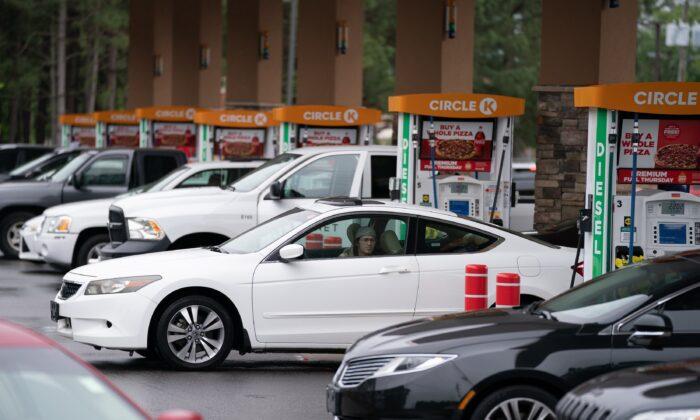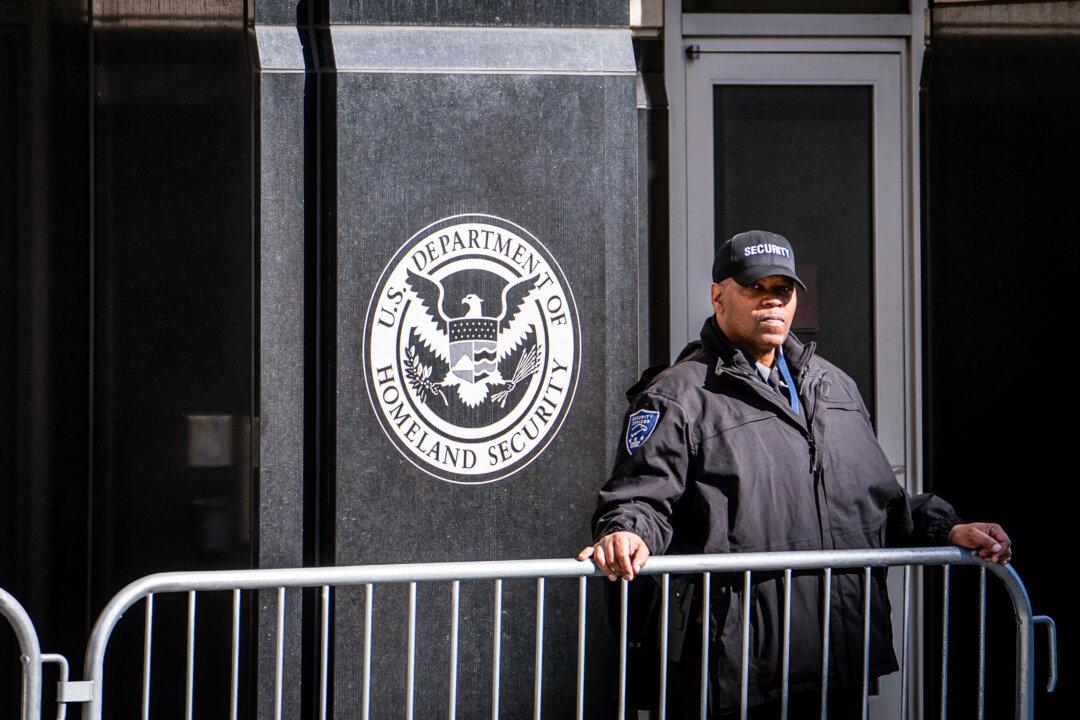Tens of millions of Americans are expected to travel over Memorial Day weekend, the unofficial kick-off to summer. They'll encounter high gasoline prices but, for the most part, not experience difficulty finding fuel.
The average price per gallon on May 26 remained several cents above $3, ranging from as low as $2.71 in the South and upper Midwest to as much as $4.17 in some western states, according to data from the American Automobile Association (AAA). While the average is 17 cents higher than last month and up $1.12 from a year ago, the organization sees the price stabilizing.
“We’re expecting the national average to continue stabilizing; we’ve seen that over the past seven to eight days or so, and we expect that trend to continue,” Devin Gladden, AAA national manager for federal affairs, told The Epoch Times.
“However, given the number of travelers that are expected to hit the roads for Memorial Day weekend, some states could see fluctuation in their averages through the weekend, particularly in areas where there is just high demand because of tourists.”
The national average is trending down slightly, just off its high of $3.04 per gallon.
“I would expect that limited downside to continue. Probably not a whole lot in terms of motorists aren’t going to realize as nice a drop as they would want to, but ahead of Memorial Day, I think the most important thing is that we aren’t trending higher, we are trending lower,” Patrick De Haan, an analyst with GasBuddy, told The Epoch Times.
The cyberattack on Colonial Pipeline earlier this month led to the company taking its major southeast pipeline offline, which in turn contributed to rising prices and gas stations running out of fuel. More than 16,000 stations at the peak were unable to provide service to customers—including nine out of 10 stations in some areas.


The Colonial situation primarily affected states between Maryland and Mississippi. Those states have seen prices dip a bit in recent days as supply restrictions ease, including a drop of 3 cents per gallon in each of Georgia and Maryland.
While things are improving on the supply front, there are several states where drivers “are having to still put some legwork into finding a station” with gas, De Haan said.
About a quarter of stations in Georgia, North Carolina, and South Carolina were without fuel on May 25. About 10 percent of stations in Virginia, Tennessee, and Maryland remained without gas.
For people traveling over Memorial Day weekend, AAA recommends that they plan ahead, calling stations to make sure they have gas and utilizing apps that track availability. One common-sense measure is filling up before arriving at a tourism hotspot, where fuel may be scarce and/or more expensive.
The slow recovery from what was a nightmare for some Americans stems from higher demand due to the economic recovery and a dearth of tanker drivers, experts say.
“A lot of those drivers during the pandemic switched over to delivering for, you know, FedEx, UPS, given all the other deliveries that are increasing at this moment,” Gladden said. “There’s still a real challenge with gas tanker drivers.”
It could take another two weeks for the supply problems to diminish, according to De Haan.
Looking forward, Americans should expect gas prices to stay around the current level through the summer because of the increased demand and higher oil prices, among other factors.
One wild-card factor is President Joe Biden’s administration’s engagement with Iran, whose oil is currently largely out of reach from the U.S. market due to sanctions.
“If there’s an agreement, and if the U.S. releases those sanctions on Iran’s crude oil, we could see more supply available to the market, which certainly would help cap any potential rally in the price of oil this summer,” De Haan said.





